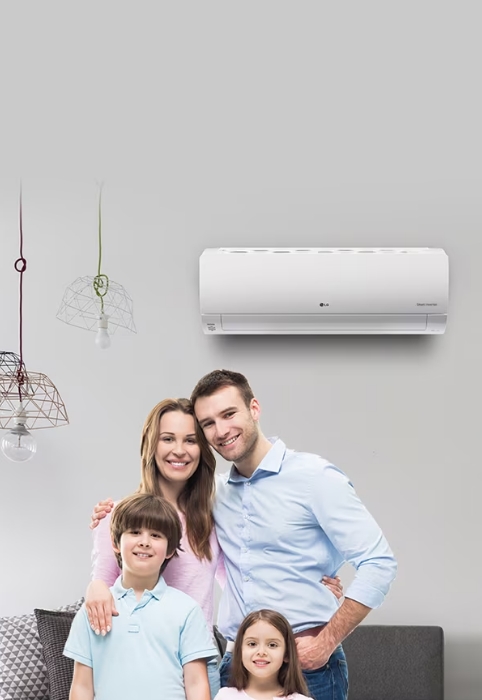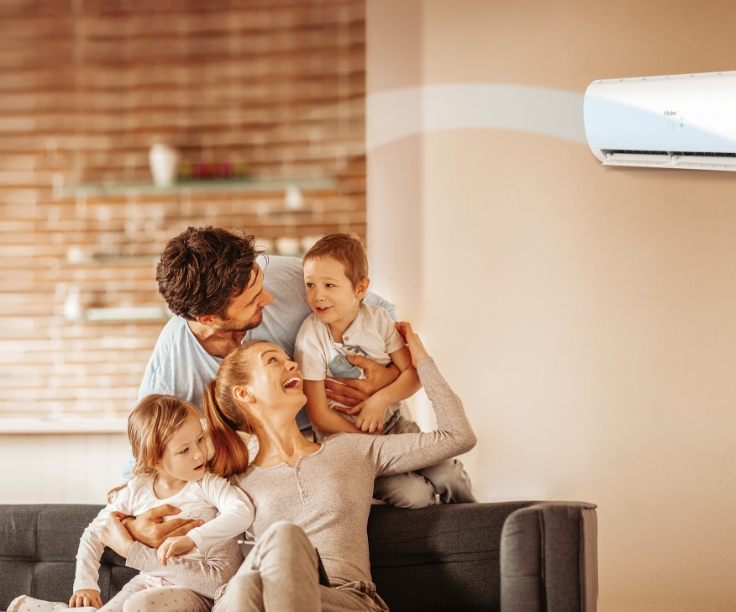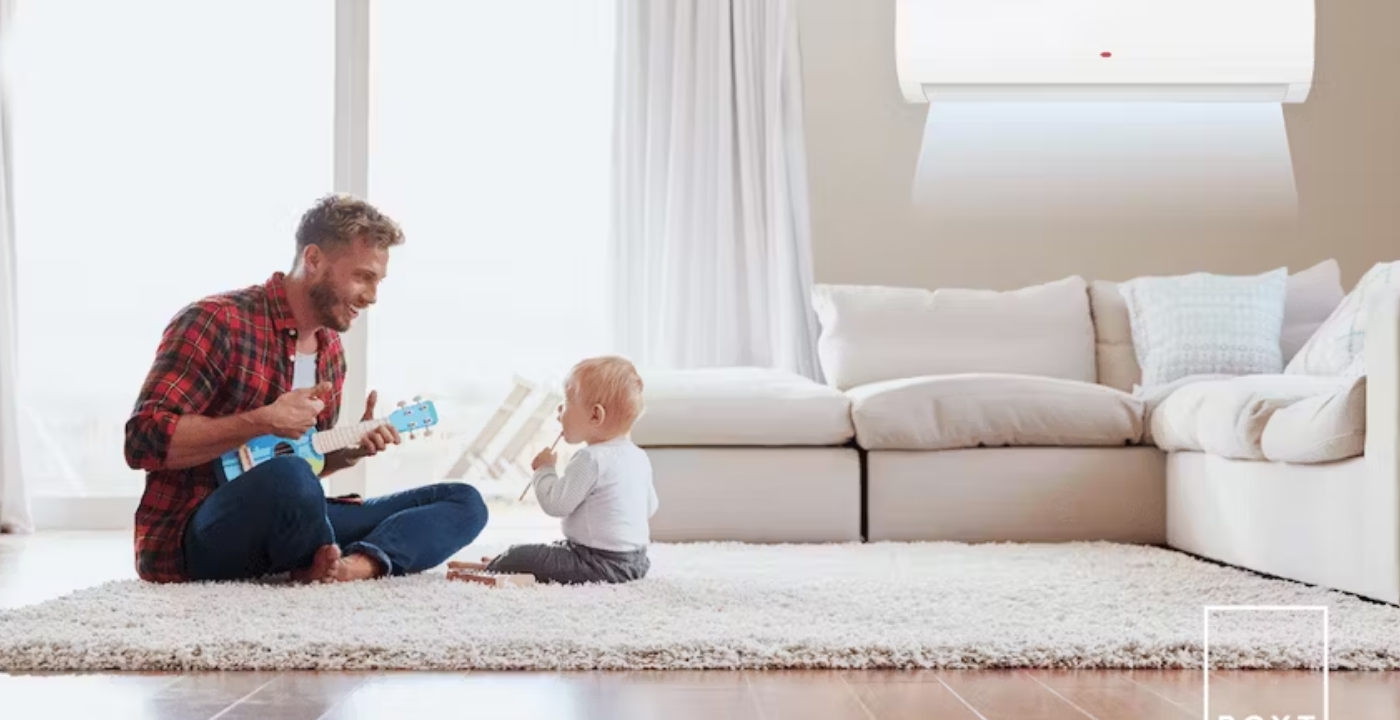Different Air Conditioning System Types to Choose From
Choosing among air conditioning system types also entails being mindful of different factors such as the total heat generated within an enclosed area and the size of the area that needs to be cooled to name only a couple. You have to consider these and other related issues so that an HVAC designer can recommend the system that is most appropriate for your home or office.
Air Conditioning system types: Window Air Conditioner

The different parts of a window air conditioner include the following categories: control system, refrigeration system, ventilation system, electrical protection system, and air circulation system.
Basically, the whole construction of these air conditioning system types could be separated into two sections:
- The Room Side – This is the cooling side, which has a well-decorated front panel wherein the supply as well as the return air grills are installed. You can adjust the louvers found in the supply air grills to deliver the air in the direction you want.
- The Outdoor Side – This is where the heat taken up by the room air is released into the atmosphere.
Split Air Conditioner
Another one of the air conditioning system types is the split air conditioner. This system has two portions: the indoor unit and the outdoor unit.
These are the parts of the indoor unit of split air conditioner:
- Evaporator or Cooling Coil – This is a copper coil made from several rounds of copper tubing. The refrigerant from the tubing enters the cooling coil at low pressure and low temperature. When the blower absorbs atmospheric or hot room air, the air goes through the cooling coil and this results in cooling of the air.
- Air Filter – This removes the dirt particles in the air and helps in supplying clean air into the room. This is placed just in front of the cooling coil.
- Cooling Fan – This is a blower that absorbs the atmospheric air or room air. It absorbs the unclean and hot air and supplies clean and cool air back.
- Drain Pipe – When the water vapor in the air becomes condensed, it forms dew or water droplets outside the cooling coil. When the dew drops from the cooling coil, it is collected in a tiny space, which is connected to a drain pipe.
- Fins or Louvers – The cool air delivered by the blower passes into the room through fins or louvers. They help change the direction or angle where the air needs to go.
The outdoor unit is the other part of these air conditioning system types. The parts include:
- Compressor – This compresses the refrigerant and intensifies its pressure before it gets to the condenser.
- Condenser – This is a coiled copper tubing where the high pressure and high temperature refrigerant from the compressor enters and gives up the heat.
- Condenser Cooling Fan – A fan driven by a motor; it has three or four blades. While the blades rotate, they absorb the air surrounding them and blow it to the compressor and condenser to cool them.
- Expansion Valve – The medium temperature and high pressure refrigerant exits the condenser and goes into the expansion valve, where its pressure and temperature suddenly drop.
Packaged Air Conditioner
Among the air conditioning system types, an HVAC designer is likely to recommend a packaged air conditioner for cooling a larger area or more than two rooms in the home or office. With this unit, there are two possible methods:
- All of the components, such as the compressor, evaporator, expansion valve, and condenser, are contained in a single box. The high-capacity blower throws the cooled air and it moves across the ducts installed in different rooms.
- The compressor and condenser are both housed in the same box. The compressed gas goes through separate units for the cooling coil and the expansion valve, which are placed in different rooms.
Both window and split air conditioning systems are normally used for capacities of up to 5 tons. For further than 20 tons, a central air conditioning system is used. In between the cooling capacities of these air conditioning system types, packaged air conditioners are used. Some places that use these units include small halls, telephone exchanges, and restaurants.
Like in window air conditioners, the important parts of packaged units are housed in one casing. Here are the types of packaged air conditioning system:
- Water-Cooled Condenser – The condenser, made of tube and shell type, is cooled using water. The refrigerant flows down the tube side and the water flows down the shell side. There must be a continuous supply of water to maintain operation of the system.
- Air-Cooled Condenser – The condenser is cooled using the atmospheric air. The outdoor unit, which is comprised of a compressor and a condenser, can be placed in an open space where atmospheric air is obtainable.
Central Air Conditioning System
For cooling bigger structures like hotels, offices, airports, factories, movie theaters, and shopping malls, a central air conditioning system is used. It would be quite expensive to install individual units in every room in such larger structures, which makes a central air conditioning system a better alternative. This system consists of a large compressor that can produce hundreds of tons of cool air.
There is a large plant room in this system where the large compressor, evaporator, condenser, and thermostatic expansion valve are all stored. These components perform the same way as with the standard air conditioning system. The only difference is their huge size and their higher capacities. The type of compressor is open reciprocating with multiple cylinders. Similar to a car engine, it is cooled by the water.
Now that the different air conditioning system types have been outlined in this article, it is up to you to decide which one is suitable for your needs. Certainly, an HVAC designer can help you with your choice. Talk to Rite Price Heating and Cooling today about your needs, and we can help you through the decision making process.







